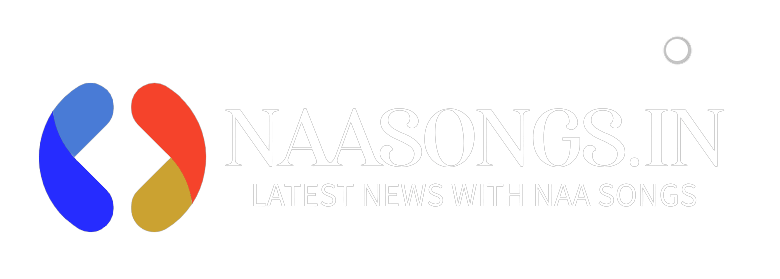Introduction
India’s vibrant tapestry of bustling markets and towering skyscrapers hides a stark reality: the precarious health security of millions of low-income workers. Juggling unpredictable gigs and navigating the informal economy, these individuals often face a cruel dilemma – prioritize their health and risk financial ruin or gamble with their well-being to stay afloat.
This is where the current healthcare landscape, with its limitations and gaps, fails them miserably. But it’s not a lost cause. A fresh approach to individual health insurance for individuals holds the promise of alleviating their anxieties and unlocking their full potential as the backbone of our nation.
The Current Maze: Patchwork Solutions and Unmet Needs
India’s healthcare landscape for low-income workers is like a well-intentioned patchwork quilt, each piece offering snippets of protection but failing to stitch together a complete safety net. Ayushman Bharat’s noble aspirations get snagged on bureaucratic barbed wire and resource scarcity, leaving many more frustrated than fortunate.
Private insurance, meanwhile, glitters like a mirage in the distance, its hefty price tag and exclusionary clauses forever out of reach. This makes the situation even worse for these people, overburdening their pockets. The prevailing system could be more helpful for low-income workers and demands many changes.
The Gig Economy: Blurring the Lines of Security
The gig economy has ripped another hole in the safety net. Millions bounce from gig to gig; their paychecks are as irregular as a monsoon storm. Traditional insurance, built for predictable salaries, leaves them dangling above a healthcare abyss. This vulnerability? It’s a silent epidemic in plain sight.
Reimagining the Approach: Tailored Solutions for a Diverse Landscape
Reimagining the approach to health insurance for individuals in India’s diverse and varied landscape involves centring on four key pillars: affordability, accessibility, inclusivity, and flexibility. Here’s an elaboration in pointers:
- Affordability: Micro-Insurance Solutions
- Introduction of micro-insurance policies with minimal premiums.
- Tailored for daily wage earners and low-income workers.
- Premium payments are facilitated through accessible channels like mobile transactions.
- Accessibility: Seamless Integration with Technology
- Leverage mobile technology for easy enrollment and management of insurance policies.
- Ensure that insurance services are accessible even in remote or rural areas.
- Simplify the claim process through digital platforms for quicker and more efficient service.
- Inclusivity: Comprehensive Coverage for Diverse Needs
- Prioritizing Common Conditions: Conditions that are commonly prevalent in low-income group people must be covered.
- Pre-existing Harmony: Excluding pre-existing conditions is like locking the door after someone falls sick.
- Critical Companions: Cancer, heart disease – these shouldn’t be financial death sentences. Critical illness coverage must be a safety net, not a luxury.
- Affordability First: Health insurance for individuals must be affordable.
- Should be easily accessible.
- Flexibility: Adapting to Changing Circumstances
- Flexible payment options as per the change in income.
- Modification as per the lifestyle change.
- Introduce short-term insurance options to cater to temporary or seasonal workers.
These are some of the pillars that can empower individual health insurance belonging to low-income groups.
Technology as a Bridge: Bridging the Physical and Financial Gaps
Integrating technology into health insurance systems can revolutionize how low-income workers in India access and utilize healthcare services.
- Mobile App-Based Enrollment and Management
- Develop user-friendly mobile apps for effortless policy enrollment.
- Enable easy policy management and updates through smartphones.
- Streamlining Claim Processes
- Introduce mobile applications that simplify the claim submission process.
- Utilize digital platforms for faster claim processing and reduced paperwork.
- Telemedicine: Healthcare at Your Fingertips
- Leverage telemedicine platforms to connect patients with doctors remotely.
- Reduce the need for physical travel, saving time and resources for low-income workers.
- Offer consultations, prescriptions, and follow-ups through virtual channels.
- Data Analytics for Customized Insurance Plans
- Employ data analytics to understand the specific health risks and needs of various worker groups.
- Design tailored insurance plans that address these unique requirements.
- Ensure that the coverage is relevant and provides real value to the insured individuals.
- Enhanced Accessibility and Convenience
- Make healthcare services more accessible, even in remote or underserved areas.
- Offer round-the-clock access to medical advice and emergency consultations.
- Educational and Awareness Tools
- Use technology to provide educational resources about health and insurance.
- Increase awareness and understanding of individual health insurance benefits among low-income workers.
Let’s leverage tech’s magic wand – not just to make healthcare accessible but to fit like a glove for India’s gig warriors. Telemedicine shrinks distances, mobile apps simplify claims, and data helps craft perfect coverage. In this tech-powered dance, everyone wins – workers stay healthy, families thrive, and our nation hums with newfound vitality.
Community: Sharing the Burden, Strengthening the Net
Community-based insurance models harness the power of collective responsibility. Local groups, pooling resources and negotiating directly with healthcare providers, can offer affordable and trusted solutions. This approach fosters social solidarity, empowers communities, and leverages local knowledge to navigate the complexities of healthcare access.
Sustainability: A Shared Responsibility
Sustainability is the elephant in the room – a big one. Micro-insurance needs creative funding to stay afloat. Partnerships, where government support meets private know-how, can be a lifesaver. We can even tap into unconventional sources like catastrophe bonds for emergencies. These aren’t just financial models but bridges to a healthier future for India’s workers.
Conclusion
Transforming healthcare for India’s low-income workers is a collaborative act. It’s a symphony where we all play our part. Policymakers must set the stage, encouraging innovation and collaboration. Insurers, the musicians, need to craft flexible melodies of coverage. Technology providers, the sound engineers, must ensure everyone hears the music, bridging the digital divide. But the heart of the orchestra lies in the communities themselves.
They must raise their voices, shaping their healthcare future. This isn’t just about protecting wallets; it’s about building a healthier, more equitable India, where healthcare isn’t a privilege but a right sung loudly for all. Let’s embrace this challenge and ensure India’s unsung heroes can find harmony in both body and spirit.
 Naa Songs
Naa Songs



